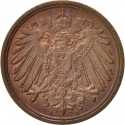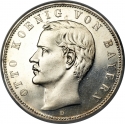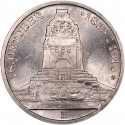You are about to finish your registration. Please check your mailbox (including spam folder). There should be a letter with a confirmation link. Check setting to make sure that your e-mail address is correct.
Send letter againDescription
German East Africa (German: Deutsch-Ostafrika) (GEA) was a German colony in the African Great Lakes region, which included present-day Burundi, Rwanda, and the mainland part of Tanzania (formerly known as Tanganyika). GEA's area was 994,996 square kilometres (384,170 sq mi), which was nearly three times the area of present-day Germany, and double the area of metropolitan Germany then.
The colony was organised when the German military was asked in the late 1880s to put down a revolt against the activities of the German East Africa Company. It ended with Imperial Germany's defeat in World War I. Ultimately, GEA was divided between Britain, Belgium and Portugal and was reorganised as a mandate of the League of Nations.
Obverse
_Heller_1/1904-1913_15.06.2019_07.44-60.jpg)
|
Depicts the German State Crown, country name in German above, date below. DEUTSCH OSTAFRIKA |
|---|---|
Reverse
_Heller_1/1904-1913_15.06.2019_07.44_01-60.jpg)
|
Value within wreath. 1 |
| Edge |
_Heller_1/1904-1913_15.06.2019_07.44.jpg)
_Heller_1/1904-1913_15.06.2019_07.44_01.jpg)





